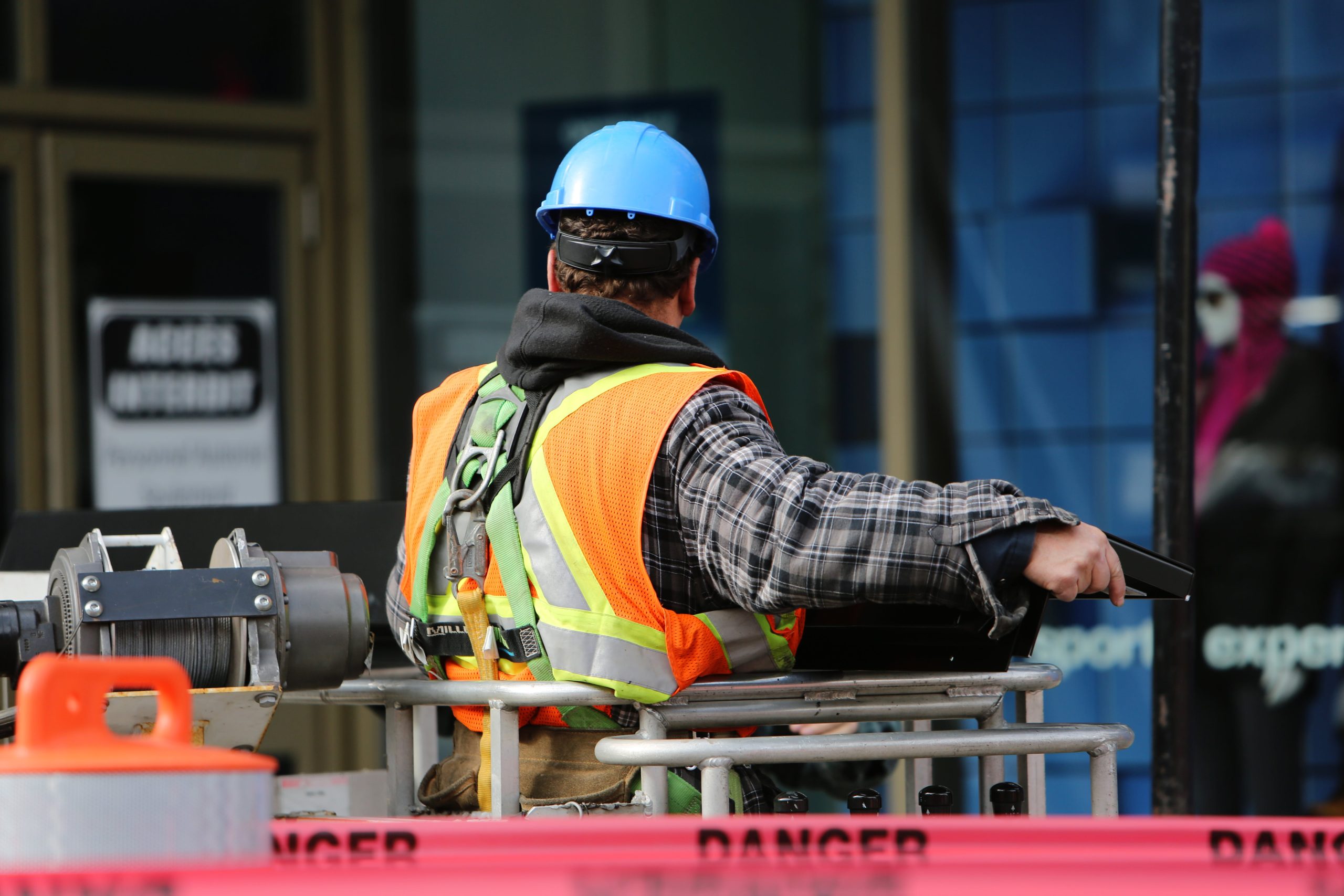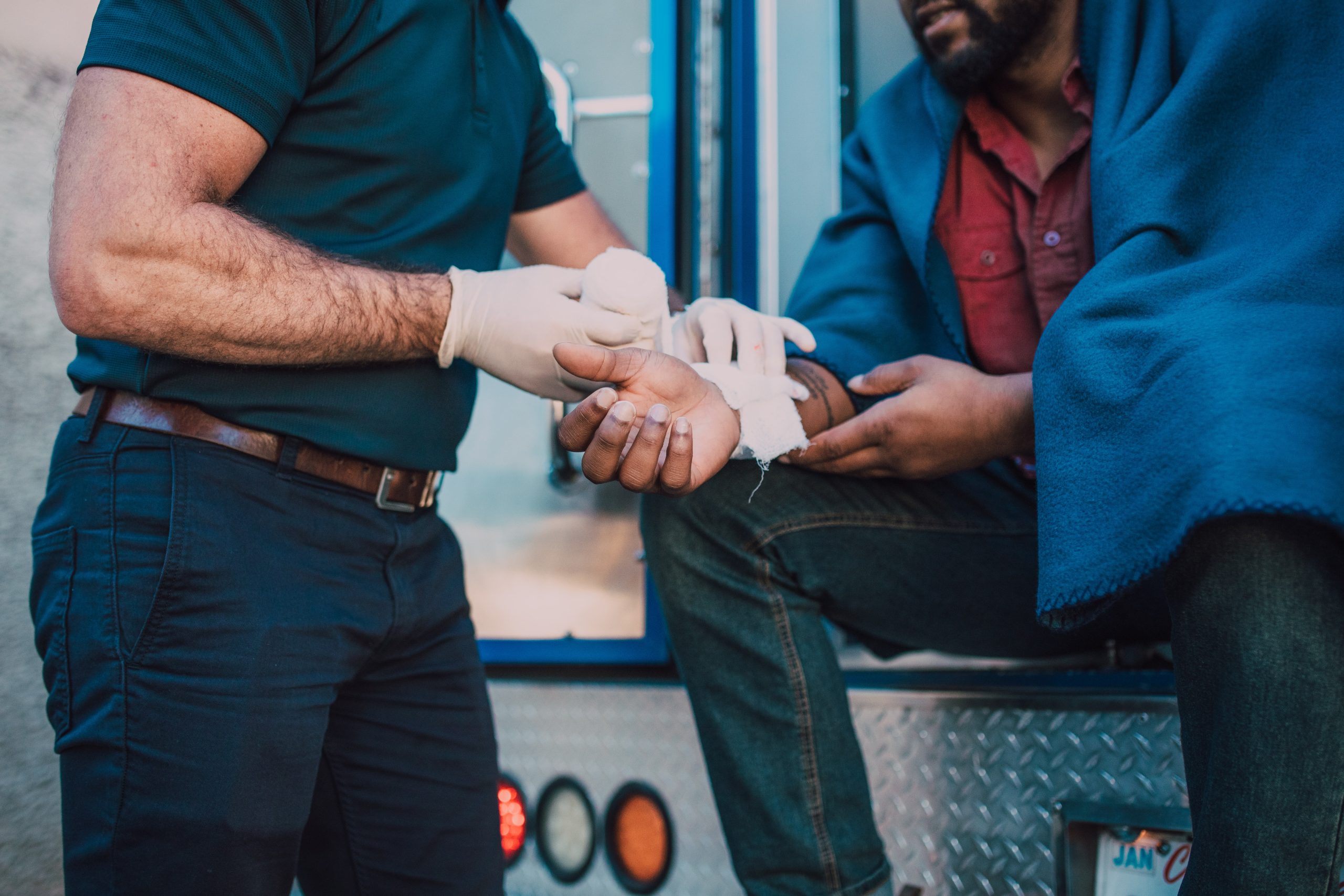The average person will spend almost a third of their adult life at work. Whether it’s a bustling office, a creative studio, or a heavy-duty factory, the hustle and bustle of the workplace can often, unfortunately, leave employees vulnerable to accidents and injuries if the proper health and safety measures are not put in place.
From minor mishaps to life-changing incidents, businesses must be educated on workplace accidents in order to ensure that workers are fully equipped to deal with them, should the situation arise. Whether you’re an employer or an employee, this is your complete guide to everything you need to know about workplace accidents.
How is an Accident in the Workplace Defined?
The Health and Safety Executive (HSE) defines an accident at work as ‘an event that results in injury or ill health’. This covers everything from slipping on a wet floor to damage from exposure to harsh chemicals.
What Are the 3 Most Common Workplace Accidents?
Trips, Slips, and Falls
According to the HSE, falls are the number one cause of workplace accidents, accounting for one-third of all personal injuries at work. They’re also the top cause for employee compensation claims. Spillages, poor lighting, and uncovered cables are the usual culprits and are all too easy to overlook when you’re rushing around on the job. This is why things like wet floor signs are so essential – they only take a second to assemble, but could potentially save someone’s life down the line.
Machinery-Related Injuries
Heavy machinery is well up there in the list of safety hazards at work, with the most common machinery-related injuries occurring in factories, construction sites, and farms. Proper safeguarding, protective equipment, and operator training is essential when it comes to machinery, as most accidents that involve heavy machinery will unfortunately have devastating results.
Vehicle-Related Accidents
Being hit or run over, falling from a vehicle, getting stuck under a vehicle, and being struck by objects falling from a vehicle – these all contribute to vehicle-related incidents being the third most common workplace accident. To minimise these, setting out proper layout routes in a workplace is crucial, as well as ensuring all employees are aware of proper directions, speed limits, and obstructions, with signs included wherever possible.
How Many Accidents Happen in the Workplace Each Year?
In 2022, 1.8 million people suffered from a work-related illness, according to the Labour Force Survey. Of these, 565,000 employees sustained an injury at work, and 61,713 injuries were reported under RIDDOR (Reporting of Injuries, Diseases and Dangerous Occurrences Regulations). A devastating 135 workers lost their lives in work-related accidents.
How Can I Report an Accident at Work?
If you’ve suffered an accident at work, it’s important to report the incident to your manager as soon as possible. Make sure they keep a record of exactly what happened and file the incident with your HR department. You’ll also want to keep a copy too, as this will be vital evidence if you want to report a personal injury claim. Recording the incident will also help to protect other employees, as it will minimise the risk of similar accidents happening in the future.
If you have suffered a very serious injury, it’s your employer’s responsibility to report the incident to the Health and Safety Executive. It’s also worth checking what your rights are regarding accident and sick pay, which will be outlined in your employee contract.
Making an Injury Claim
If you suspect that your employer is to blame for your accident at work, you have the right to claim for compensation. An injury claim has to be made within three years of the date of your accident, and you’ll usually need to enlist the help of a lawyer, or, if you belong to a trade union, you can use their legal support.
Employers are required by law to have the necessary insurance required to cover a successful injury claim. If you request the details of these, they are also required to provide them.
What Form is Used Online for Reporting a Specified Injury?
The F2508 form, or the Report of an Injury or Dangerous Occurrence form, is used in situations where a specified injury or accident has occurred in the workplace and must be reported under the Reporting of Injuries, Diseases and Dangerous Occurrences Regulations (RIDDOR) 2013.
These forms have to be returned online to the Incident Contact Centre, or to your local HSE office. Make sure to do this no longer than 15 days after the accident occurred. If the injury is very serious, it’s recommended to carry out a full risk assessment – and possibly an internal investigation – in order to minimise the risk of an accident happening again.
How Can Employers Help?
As an employer, it’s your job to look after your employees’ wellbeing. Businesses have a duty of care and several legal obligations to take care of their team; if they fail to do so, and the employee can prove they were negligent in their responsibility of care, they can be at serious risk of facing a claim for compensation.
If you’re an employer wanting to provide proper health and safety support to your team, here are some key ways you can do so:
- Give your staff training. Whether it’s an in-person workshop or an online course, providing health and safety training is essential, especially if you’re working in a high-risk environment.
- Conduct regular risk assessments. Staying aware of your work zone safety will ensure that you keep your team as safe as possible while mitigating the risk of any legal issues down the line.
- Provide PPE (Personal Protective Equipment). High-vis clothing, safety glasses, hard hats – make sure you’re always stocked up with everything your workplace calls for. This also includes warning and hazard signs, such as ‘wet floor’ signs for spillages.
- Ensure regular maintenance. If you’re working with machinery and equipment, it’s vital that these are kept safe and secure with up-to-date checks.
Are you an employee concerned about your rights after an accident at work? Or an employer wanting to make sure you stay on the right side of health and safety law? At The H&S Dept, we have a whole team of expert health and safety specialists on hand to give you professional advice and support in keeping up to date with all necessary legislation. Get in touch today to hear more about how we can help you stay safe at work.




